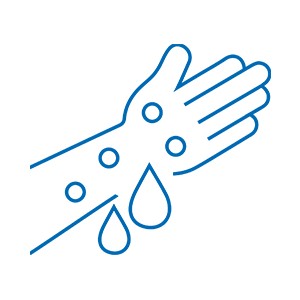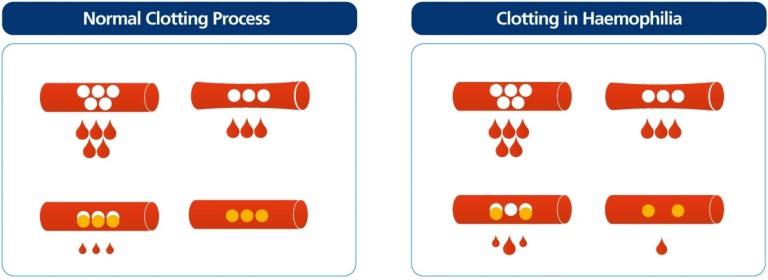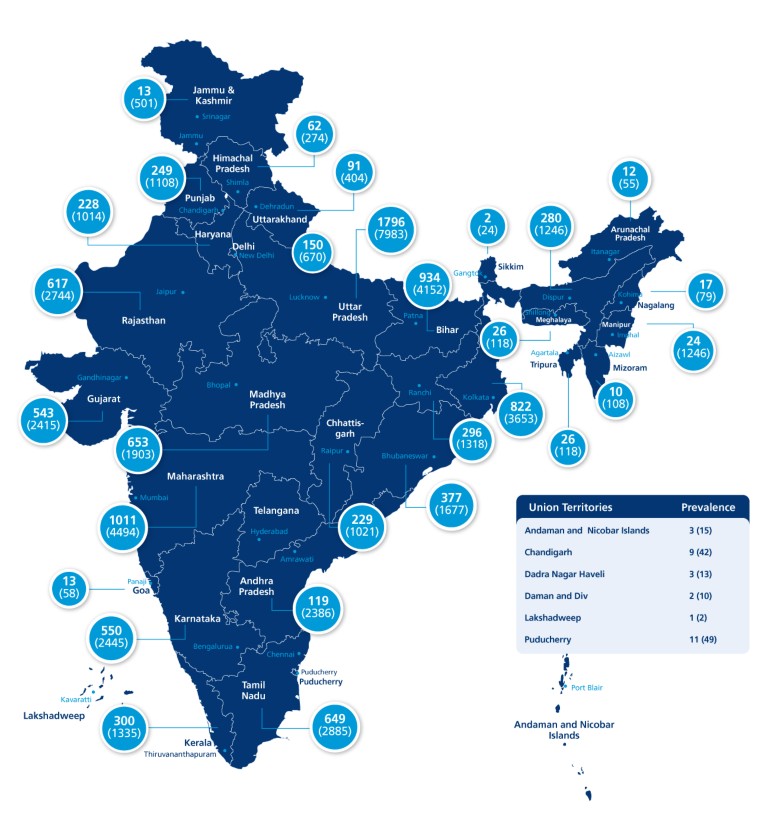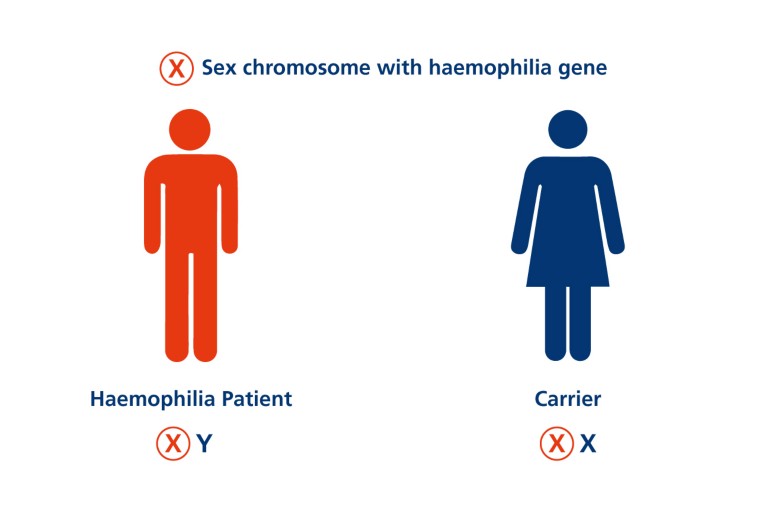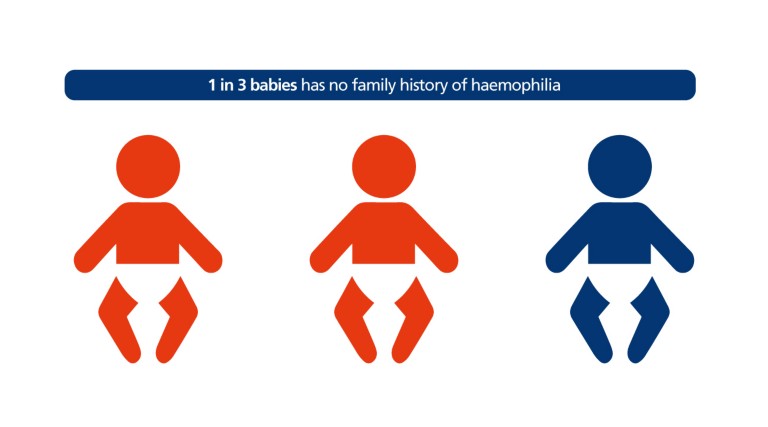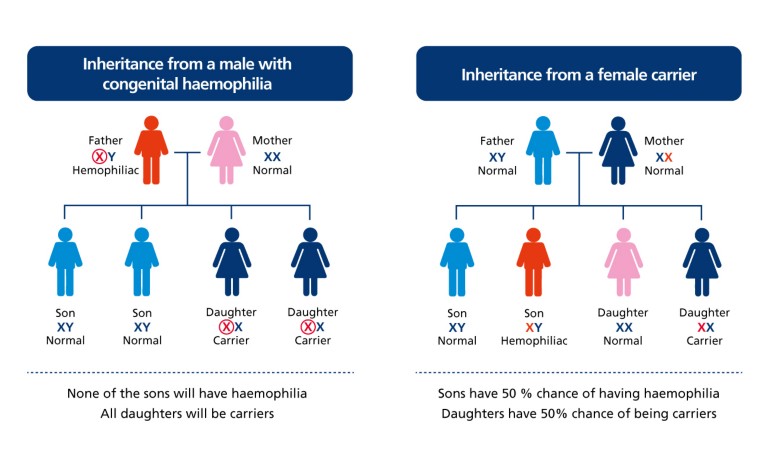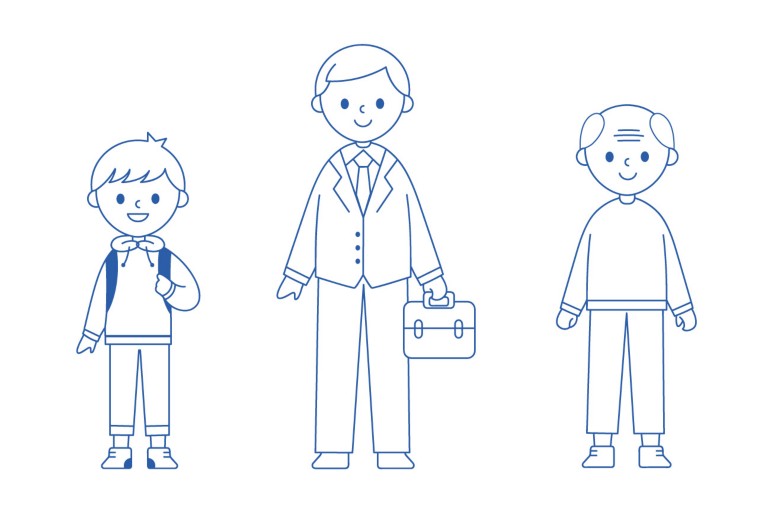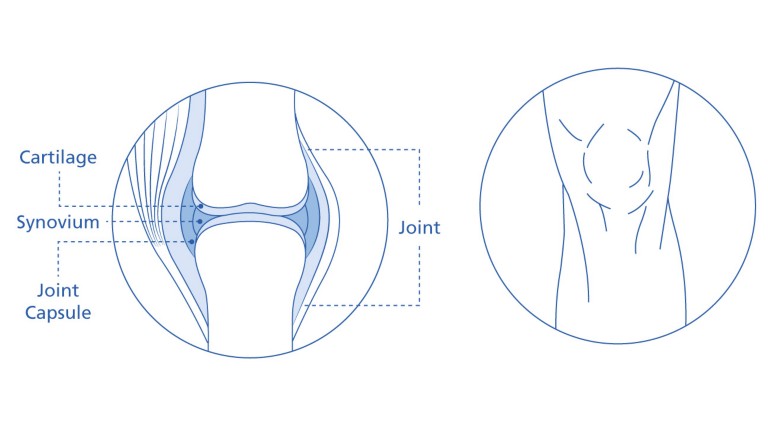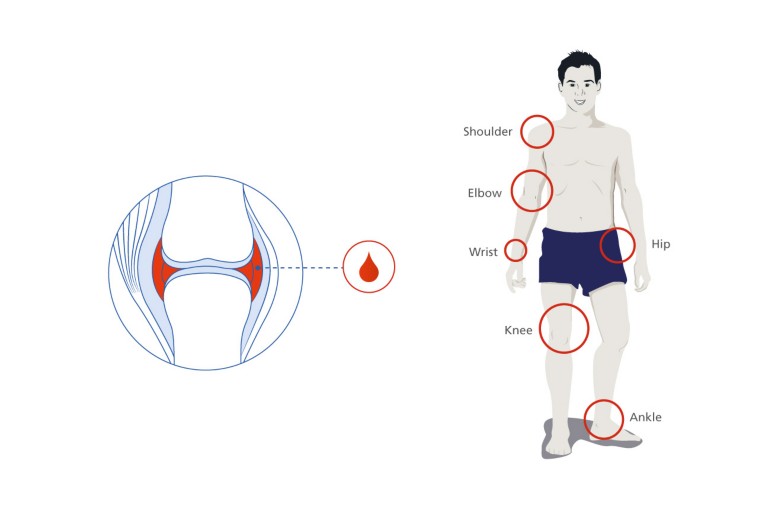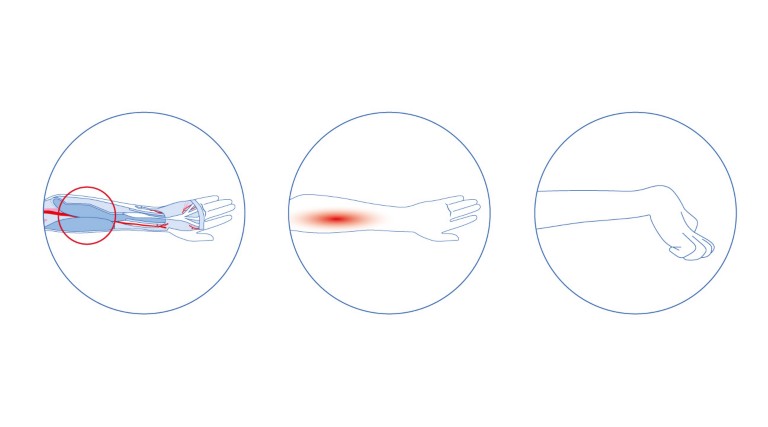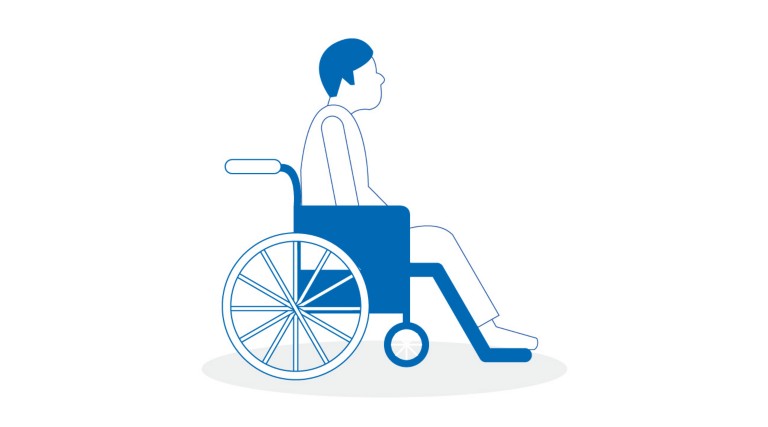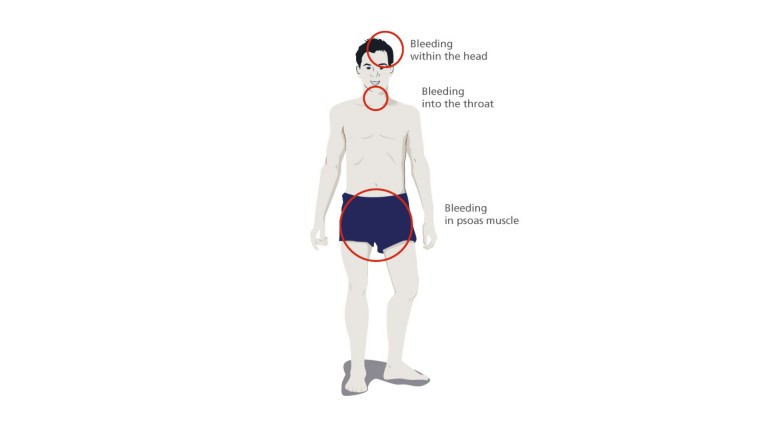Haemophilia is a rare and serious disease affecting approx.
1 out of 10,000 people around the world. Many people with
haemophilia are still undiagnosed or inadequately treated. Even when
treated, people may suffer from chronic pain and limited mobility
mainly due to bleeds in the joints, and if undertreated or not treated
at all, risk dying at a young age.
Haemophilia A
People with low levels of blood clotting protein, Factor VIII (FVIII)
Haemophilia B
People with low levels of blood clotting protein, Factor IX (FIX).
Approximately 30-50% of haemophilia patients (depending on the type of haemophilia) have severe disease and can require treatment for bleeding several times per month.
Severe haemophilia usually becomes apparent in the first years of life – often when the child starts to move about independently. Haemorrhages often occur in the joints (particularly the weight bearing joints such as knees and ankles). These joint bleeds can cause severe pain and often permanent damage and disability if not treated properly. Other mild, moderate or even life-or-limb threatening bleeds can occur in the muscles, soft tissues, gastrointestinal tract or even the brain. In addition, trauma, major surgery, tooth extractions or other minor surgical interventions require medical treatment to manage the associated bleeding.
When a person bleeds, his body takes steps to stop the bleed. Thirteen different proteins called clotting factors work together to form a blood clot. Blood clots form to stop any bleeding. This series of events make up the blood clotting process.
Haemophilia prevents blood from clotting. It is passed to a child from their parent. People with haemophilia have a clotting factor that is missing or reduced. This means that they cannot form blood clots. This makes bleeding last longer than it should.
In haemophilia, one clotting factor is missing, or the level of that factor is low. This makes it difficult for the blood to form a clot, so bleeding continues longer than usual, not faster. Since there are many clotting factors in plasma, each factor is named with a Roman numeral.
Example:
VIII = eight IX = nine
According to the World Federation of Haemophilia,
~ 400,000
people are affected by haemophilia worldwide
Using the population data for 2011 from the Census of India15
and a prevalence of haemophilia A of 4 per 1,00,000, the estimated number of haemophilia patients in India would be around 48,407. Thus, India may have over 70,000 patients with haemophilia A and B.
Figure below shows the observed number of cases (calculated at a prevalence of 0.9 per 1,00,000 population) and estimated number of patients (calculated at 4 per 1,00,000 population) with haemophilia A in States/UT of the country.
People are born with haemophilia. They cannot catch it from someone. Haemophilia is usually inherited, meaning that it is passed on through a parent’s genes. Genes carry messages about the way the cells of the body work. For example, they determine a person’s hair and eye colour
Genes are found on chromosomes. Two of these chromosomes (called X and Y) decide a person’s sex. The haemophilia gene is carried on the X chromosome.
Males 1X 1Y
For a male having haemophilia, none of his sons will have haemophilia, but all daughters will be carriers.
Females 2Xs
For a female having haemophilia, her sons have a 50% probability of having haemophilia and daughters have a 50% probability to be a carrier.
Sometimes a baby is born with haemophilia although his mother is not a carrier. This is because the factor VIII or IX gene changed only in the baby’s body.
A person born with haemophilia will have it for life. The level of factor VIII or IX in his blood usually stays the same throughout his life.
Bleeding is rare in babies with haemophilia, but they may bleed for a long time after circumcision. When babies start to walk, they bruise easily. They also bleed longer than usual after an injury, especially to the mouth and tongue. As children grow, spontaneous bleeding becomes more common. It affects the joints and muscles.
Spontaneous bleeding
In haemophilia, bleeding can happen anywhere in the body. Sometimes it can be seen and sometimes it cannot. Bleeding can happen after an injury or surgery. It can also happen for no clear reason.
